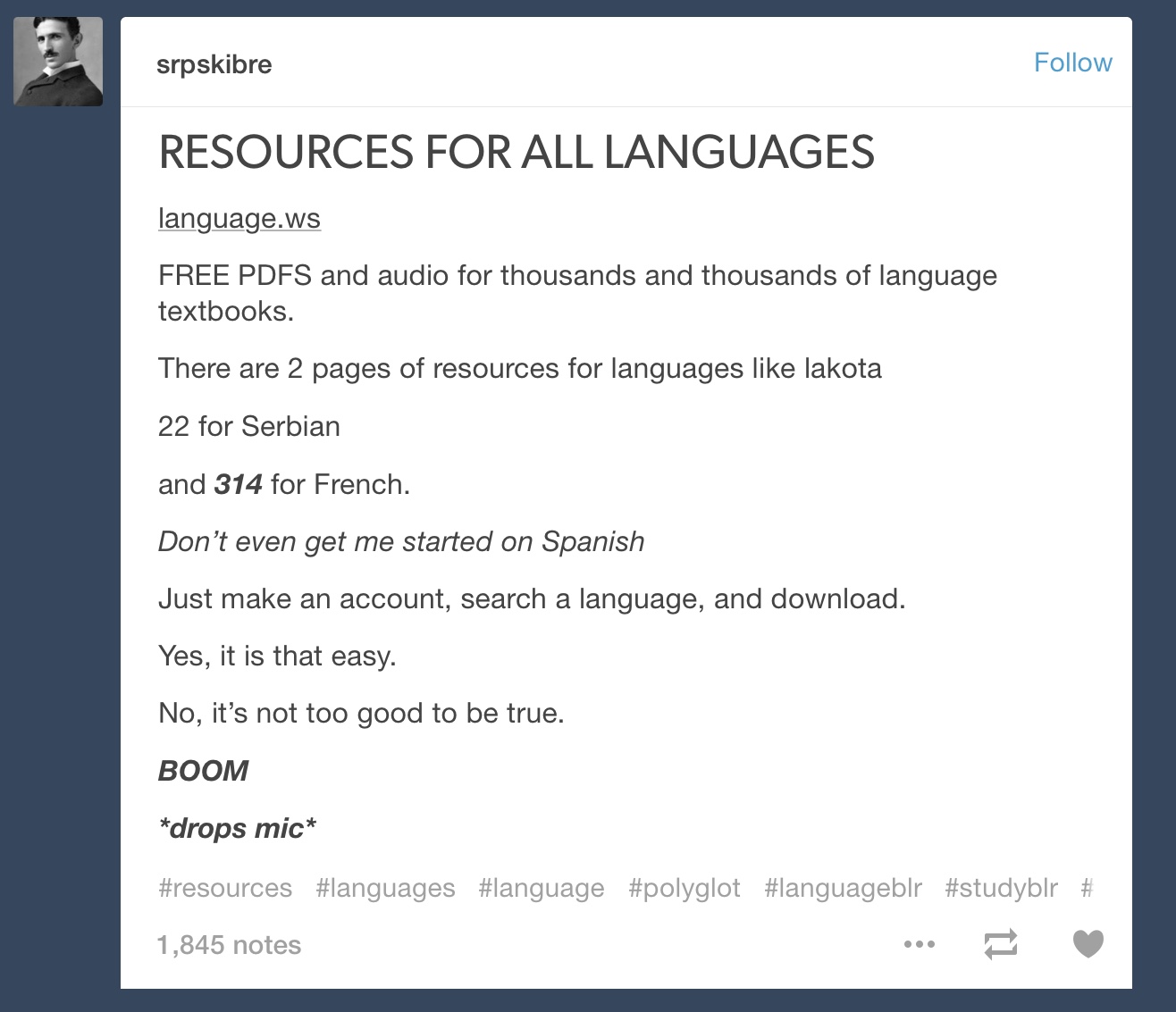A language tutor can teach you the ins and outs of your target language, and help you achieve your learning goals faster and easier. But the pricing confuses many students. Some tutors cost $50+ per hour, others are available for less money? What’s the difference? Read on to learn more about different backgrounds, levels, and prices.
Read more4 Techniques for Switching Your Brain into Language Mode
Have you ever heard of a phenomenon called "Priming"? Priming is what psychologists call it when your brain adapts to the environment around it without you realising. For example, you might automatically walk slower in a nursing home than you do in a gym. The brain helps your body to adjust, and this also affects your memory and even your confidence and the whole way you interpret situations.
How Priming Helps You Turn on Your Brain
Priming is largely unconscious, but now that you’re aware of it you can also use it to your advantage when learning languages. The idea is to switch your brain into “language mode” and use cues from your environment to help you get into the right zone.
Want to learn more about how to be a productive language learner?
©morethanmaths on Flickr
How Subtle Prompts Help You Stay in The “Language Learning Zone”
When I was a German tutor, I’d teach many people in their lunch hour. They would stay in the office at their English-speaking workplace, close the door and open up Skype to start chatting German with me.
In those situations, I’d commonly noticed that it took them a lot of time to warm up, relax, and start chatting away. Having thought about the learning environment and what it means for your performance, I came to the conclusion that these students need to make a brain switch from work mode to learning mode.
In this article on Wired, the author describes how a mere glance at the native speaker will prompt them to blurt out native words.
The different role you need to play as a language learner.
And there’s more at play than just the language you’re speaking.
Many people who work in management or office-based roles are in an environment that looks a bit like school, but demands a completely different behaviour. “Professionals” don't just go out and try things. They are expected to control their creativity and maintain a professional image at all times.
When you think about the good mindset for language learners, it's a contrast: You'll do well if you can combine curiosity, discipline and a complete disregard for embarrassment!
How to Start Switching Your Brain Into a Different Mode
Switching up a part of your environment can help you become a better learner, with simple prompts that take seconds to implement.
Try out some ideas that learners and teachers can use to make priming work in the right way:
1. Listen to Target Language Songs and Watch Movies
I will not promise you that watching an awful lot of films in a foreign language will magically beam fluency into your mind.
The real benefit of surrounding yourself with the target language is that you stay engaged with it and develop knowledge of the country. In terms of the priming benefit, it will work magic. Plus, you get to do it while putting your feet up or driving.
2. Find a Suitable Slot in Your Schedule
Schedule your learning sessions for the right times. For example, I like doing my chatting in Spanish on the drive back from Zumba - partly because the Spanish lady is captive in my car, partly because we've just spent an hour having fun and dancing around. Others also swear by having a nice glass of wine to relax or using breathing exercises.
Another great tip is to create a learning corner in your home - somewhere quiet, free from distractions and full of positive associations.
3. Visualise Your Life as a Successful Language Learner
School classroom teachers have known for a long time that putting up posters and displays around the classroom can get pupils in the right state of mind for learning. They don't have to be written in the foreign language, but just reminders of what's great about the country you're learning about.
Take a tip from this and create your own language learning displays full of things that interest you about your language. They could be recipes, tickets from old trips, tourist brochures or printouts from the internet. I particularly love vintage posters.
You can find more inspiration on my Pinterest boards for German, French and Russian.
4. Warm Up in Your Target Language
In my teaching role, I try to start my lessons off easily with some smaller warm-up activities like asking students how they are or offering them a drink.
Recently, I received the great tip that using the same warm-up activity every time for regular students is actually helpful - here I was worrying people would get bored, but the learner's perspective was that knowing "what's coming" allowed them to prepare and feel confident at the start of the lesson. That puts every learner in the right state of mind for success.
A Festive Take on Using Your Environment as a Study Aid
Click here for my article on learning a language at Christmas (even if you don’t celebrate it)
First published July 2013. Last updated December 2021.
How to Learn a Language Using Snapchat (Podcast Episode 45)
Everyone's talking about social media, some people are talking about social media for language learning. In today's podcast episode, get the most specific advice possible as Lindsay and I guide you through the Snapchat app for language learning.
Listen to the episode:
Don't forget to catch the mention of our good friends at Flashsticks, the language learning post-it guys. You can purchase vocabulary post-it notes in 8 languages and get 10% off with the code KERSTIN10.
What is Snapchat?
Snapchat is a social media app for any smartphone. It lets you share photos or videos, and your snap only lasts 24 hours unless you make it a "memory".
Of course you can change the menu language, but with such strong visual focus that alone won't teach you a language.
It's designed for camera phones and not available on your desktop computer.
Why is it awesome?
- It's easy, fast and low-pressure. In other photo social networks, you would be tempted to make every picture stunning and impressive and beautiful. But in Snapchat, you'll just play and learn in the process. What does that mean? No more shyness, no more reasons to avoid speaking!
- It allows you to stitch things together into a story, so you can share a 5-second snap, or go ahead and combine several videos to show how you speak a foreign language.
- For language learning, the new Memories feature is a way to track your progress. Record yourself speaking today, save the memory, and try the same thing in a month. You'll be surprised at your own progress!
How to Get The Most Out of This For Languages
You may have to set up a little system in order to get the most out of this, for example an evening review or a regular vocab routine.
1. Document
Lindsay studies every morning and documents her mistakes on Snapchat, while I am more spontaneous and use the system to show and share how languages pop up in my day.
2. Check and Correct Errors
One other idea is to practice what you want to practice, then check back and correct the errors that you made. We go into detail about how important it is not just to make the mistakes, but to correct the mistakes so that you can get better.
3. Make Yourself a Vocab Resource
As you go through your day, why not take pictures of all you see around you and build yourself a little daily vocab resource? You can save the story in Memories at the end of the day, or do an evening review to add the words to your vocabulary bank.
Great Accounts to Follow (Click for the Snapcodes)
- fluentlanguage
- ldlanguages
- irishpolyglot
- flashsticks - recommended!
- bradchase
Links and Further Reading - Become a Snapchat Expert
- How I Use Snapchat For Language Learning on Lindsay's blog
- North American Polyglot Symposium, where Lindsay is giving a talk this weekend
- Ghostcodes app
- Die Sendung mit der Maus, German kids' TV show with bilingual credits
Are You a Snapchat User?
If you use Snapchat for language learning (or not), leave us a comment and share your usernames and snapcodes.
Thank you guys so much for being podcast listeners, chatting to us on twitter (I'm @kerstinhammes and Lindsay is @ldlanguages) and making your voices heard!
Podcast Episode 29: How to Be Super Efficient with Languages with SmarterGerman's Michael Schmitz
Thanks to our podcast sponsor Hello Talk - check out their free app.
Note the episode contains two mild swearwords!!
Listen to the latest episode
Things get real with Michael Schmitz, creator of the SmarterGerman blog and teaching system. Michael is dedicated to bringing German learners to a high level in just a few months. And he has some frank opinions about what it takes to get there.
If you want to learn about efficient German learning, this is your show. Listen to discover:
- Why teaching at Berlitz made Michael want to start his own thing
- Why having fun is way overrated in language learning
- What efficiency is all about
- How to become an efficient and productive learner
- Why a polyglot and a language teacher is not the same thing
- Why you should never need external motivation to learn German
"Either you have money or you have time. I can save you many, many hours of your life."
"Language learners need someone to kick their ass sometimes."
Links From This Show
- Michael's website SmarterGerman
- Binaural Songs: How to use damit in German
- Speak German like a Native, my Pronunciation (and Spelling) Course
- Irregular Verbs Wizard App
Tips of the Week
Michael chose tip 1, and added that productivity and efficiency allows for the opportunity to become a creative thinker. Listen to his advice - excellent stuff!
1) Become a More Productive Learner with 12 tips from 5 Minute Language
2) Plan your Imaginary Trip
3) Sing Grammar Songs
This episode is sponsored by Hello Talk, the most focused language exchange app out there.
How to Learn a Language with Thousands of Helpers on Tumblr
Today's post comes from a language learner I've known for about a year. Maria is based in Newcastle and first talked to me during the 50 Calls Project. I love her enthusiasm and her awesome perspectives on language learning. Recently she contacted me to offer a guest post on language learning on Tumblr - I'm not a Tumblr user myself so I jumped at the chance.
Enjoy Maria's post!
Never heard of Tumblr?
The magical world of Tumblr might be new to you. In this case, here's a definition I saw on Yahoo Answers, where they describe Tumblr like this:
A place to "effortlessly share anything. Post text, photos, quotes, links, music, and videos from your browser, phone, desktop, email, or wherever you happen to be. You can customize everything, from colors to your theme's HTML.
So in essence, Tumblr another social media platform. But what separates this one from other social networks is that once you have an account, you can create numerous blogs and join a multitude of intriguing communities, from Doctor Who to interior design.
It's also different because in general on the website, people don't tend to know each other. You don't add your friends or family, but create a family of the people who share your interests! The example I'm going to talk about is, of course, the language learning community on Tumblr!
Start with a Tag
Sound confusing? It's really not. Anyone, any age, anywhere can join a community they like or search for whatever they like. My favourite tag is the 'polyglot' tag but I wouldn't dare call myself a polyglot at all! You don't even need to be fluent in another language. It's just a good bit of fun for people who are interested, while acting as a serious study aid - it certainly helped me get through my Spanish GCSE!
You don't even have to have an account to see the grand world of Tumblr. The website is easy to navigate and you learn more as you go on, building your page and gaining followers. Like Twitter, you can reblog (retweet) and like (favourite) different posts, adding your own comments too! You can directly 'ask' people questions and follow blogs. You can search for a tag to see all the posts under that tag, and that's where the community you want to join will be found!
For languages, you want to be looking at tags like #polyglot, #foreignlanguage, #langblr or of the language you want to see, for example #esperanto.
Tags Give You Everything
From playful jokes to help with confusing grammar from native speakers, the sky is the limit over on Tumblr. There are videos, text posts, photos, and links to other websites. You'll find a lot of relatable posts made by other people in the same position as you, which are bound make you laugh. I can't count the times I've read a post and in my head I'm thinking, 'Oh my gosh, this person is me!'.
Here are a few good examples:
Supportive Community at the Touch of a Button
But Tumblr is not just for jokes. It can be a serious resource. Users post important grammar points, language tips and expert knowledge on any language.
On one occasion, I looked at a post that finally helped me grasp how to use the cases in Latin, and the next post along I picked up some Argentinian slang. You can directly message people and ask them about your own challenges too and they're more than happy to share their expertise. They might come asking you too.
The people in Tumblr's communities offer support if, for instance, you post about having a tricky patch in a language. Everyone is super friendly! And if you've hit a bit of a barrier recently with your learning, there is motivation left, right and centre on Tumblr. All it takes is a quick scroll down a tag and you see something new and it sparks off the relationship between you and your language again! You can find weekly challenges and search for a language exchange partner, creating global friendships while learning and teaching a language.
But what if I'm learning a really obscure language?
If there's a language, there's a tag. Someone somewhere is learning that language and is posting about it on Tumblr! You might find tips about your target language or resources you've never seen before. They come in heaps, seriously. I've seen list after list of free websites to help you learn French, or specific YouTube accounts for Portuguese. These people have spent their time searching so you don't have to! And it's all at the click of a button!
You can post in foreign languages yourself and ask for corrections, or communicate with people in the community in their language. The ways to stimulate learning are endless, and a lot of the time you're doing it subconsciously as you scroll down the page. There are thousands of people in the community from all corners of the world, and to think so few people know about this language learning gold mine!
If you want to have a peek at the magical language learning world on Tumblr, start with the #langblr tag and enjoy your journey down the rabbit hole..
Okay, as I was editing this post I got pumped up. Maria, I'm on Tumblr too now! Joining the masses! Getting into the community! Are you on Tumblr too? Leave your opinion in the comments and share your favourite Blogs and Tags with us!












